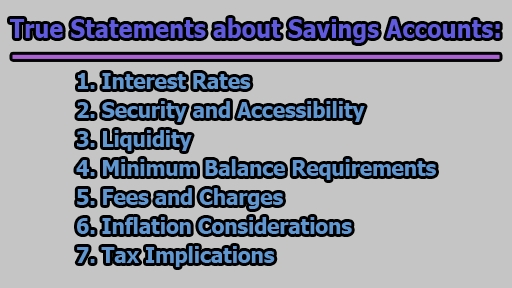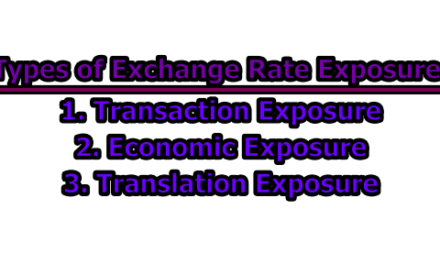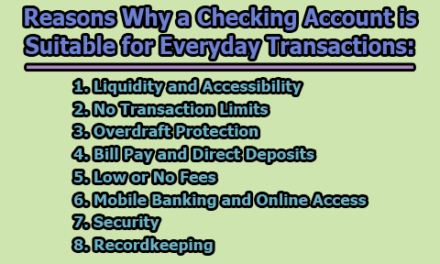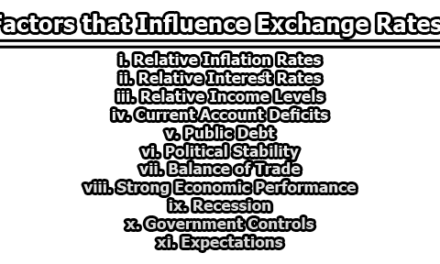True Statements about Savings Accounts:
Savings accounts are a fundamental component of personal finance, offering a secure and accessible way for individuals to store and grow their money. These accounts are provided by banks and credit unions, and they serve as a cornerstone for financial stability and future planning. In this article, we’ll explore the true statements about savings accounts.
1. Interest Rates (The Earning Power of Savings Accounts):
Interest rates are a key factor that sets savings accounts apart from traditional checking accounts. When you deposit money into a savings account, the financial institution pays you interest on that balance. This interest is essentially a reward for allowing the bank to use your funds for its lending activities. Here’s a breakdown of the concept of interest rates in savings accounts:
- Variable Interest Rates: Savings accounts commonly offer variable interest rates, meaning the rate can fluctuate based on economic conditions and the policies of the central bank. Central banks may adjust interest rates to control inflation, stimulate economic growth, or address other monetary objectives. As a result, the interest rate on savings accounts may change over time.
- Compounding Interest: The magic of compounding interest is a powerful aspect of savings accounts. In simple terms, compounding interest means that not only do you earn interest on your initial deposit, but you also earn interest on the interest that has already been added to your account. Over time, this compounding effect can significantly boost the total amount of interest earned.
- Fixed vs. Variable Rates: Some savings accounts offer fixed interest rates, which remain constant for a predetermined period. This stability can be advantageous in a rising interest rate environment. On the other hand, variable rates can be beneficial when interest rates are expected to decrease, allowing account holders to potentially benefit from future rate cuts.
- APY (Annual Percentage Yield): When comparing savings accounts, it’s essential to look at the Annual Percentage Yield (APY). The APY takes into account the compounding of interest over a specified period and provides a more accurate representation of the overall return on the account. While the interest rate indicates the nominal interest paid, the APY considers how frequently the interest is compounded.
- Introductory Rates: Financial institutions may attract new customers by offering higher-than-average introductory interest rates. However, these rates are often temporary and may decrease after a certain period. It’s crucial for savers to be aware of the introductory period and understand the standard interest rates that will apply once the promotional period expires.
- Tiered Interest Rates: Some savings accounts feature tiered interest rates based on the account balance. Higher balances may earn a more favorable interest rate, providing an incentive for individuals to save more. However, individuals should carefully consider whether they can maintain the required balance to maximize the benefits of tiered interest rates.
2. Security and Accessibility (The Foundations of Financial Confidence):
Beyond the earning potential through interest rates, one of the most significant advantages of savings accounts lies in the dual pillars of security and accessibility. These features are essential for individuals seeking a reliable and convenient place to safeguard their money while maintaining the flexibility to access funds when needed.
- Federal Deposit Insurance: One of the primary reasons savings accounts are considered a safe haven for funds is the protection provided by federal deposit insurance. In many countries, including the United States with the Federal Deposit Insurance Corporation (FDIC), deposits in savings accounts are insured up to a certain limit. This insurance means that even if the financial institution faces financial difficulties or goes bankrupt, the depositor is guaranteed to receive their insured funds.
- Risk Mitigation: Savings accounts are low-risk financial instruments compared to many investment options. While investments carry the potential for higher returns, they also come with varying degrees of risk. Savings accounts, with their federal insurance and stable interest rates, provide a secure place for individuals to park their money without the concerns associated with market volatility.
- Ease of Access: Savings accounts offer unparalleled ease of access to funds. Account holders can withdraw money through various channels, including ATMs, online banking platforms, mobile apps, and in-person transactions at bank branches. This accessibility makes savings accounts a practical choice for both everyday financial needs and unforeseen emergencies.
- 24/7 Account Management: With the advent of online and mobile banking, individuals can manage their savings accounts 24/7. This means checking balances, reviewing transactions, and transferring funds can be done at any time from the comfort of one’s home or on the go. The convenience of round-the-clock account access adds an extra layer of appeal to savings accounts.
- Safety from Market Fluctuations: Unlike investments tied to the stock market or other financial markets, the value of funds in a savings account remains stable. This stability shields account holders from the market fluctuations that can impact the value of stocks, bonds, or other investment instruments. For those who prioritize capital preservation, savings accounts provide a reliable sanctuary.
- Emergency Fund Viability: The combination of security and accessibility makes savings accounts an ideal choice for building emergency funds. In times of unexpected expenses or financial hardships, individuals can swiftly access their savings without worrying about market conditions or penalties associated with certain investments.
- Global Acceptance of Savings Accounts: Savings accounts are universally recognized and accepted, making them a practical choice for individuals who may need to access their funds in different regions or countries. This global acceptance ensures that savings accounts remain a versatile and reliable financial tool for international travelers or those living abroad.
3. Liquidity (The Flexibility of Savings Accounts):
In addition to offering security and accessibility, savings accounts are celebrated for their high level of liquidity. Liquidity refers to the ease with which an asset can be converted into cash without significantly affecting its market price. Savings accounts, with their fluidity and flexibility, are a key tool for individuals looking to balance financial stability with the ability to access funds promptly.
- Quick Access to Funds: The primary feature that defines the liquidity of savings accounts is the ability to access funds quickly and without substantial penalties. Unlike certain investments that may impose restrictions or fees for early withdrawal, savings accounts allow account holders to withdraw money whenever needed. This characteristic makes savings accounts an excellent choice for short-term financial goals or emergency funds.
- No Lock-In Period: Savings accounts typically do not have a lock-in period or maturity date. This means that account holders are not obligated to keep their money in the account for a specific duration. The absence of a lock-in period provides individuals with the freedom to withdraw their funds at their convenience without incurring penalties or restrictions.
- Emergency Fund Functionality: The liquidity of savings accounts makes them an ideal vessel for emergency funds. Emergencies often require immediate access to funds, and the quick and penalty-free withdrawals offered by savings accounts ensure that individuals can respond to unexpected financial challenges without delay.
- Flexibility for Short-Term Goals: Individuals saving for short-term goals, such as a vacation, down payment on a house, or a major purchase, benefit from the liquidity of savings accounts. These accounts provide the flexibility to accumulate funds over a short period while maintaining the option to withdraw the money when the goal is ready to be realized.
- Cash Flow Management: The liquidity of savings accounts plays a crucial role in effective cash flow management. Whether it’s covering monthly expenses or taking advantage of an investment opportunity, the ability to access funds promptly allows individuals to navigate their financial responsibilities and capitalize on favorable financial prospects.
- No Market Risk: Unlike certain investments that are subject to market fluctuations, savings accounts are not tied to the performance of financial markets. This lack of market risk ensures that the value of funds in a savings account remains stable, providing peace of mind to individuals who prioritize capital preservation and low-risk financial instruments.
- Opportunity for Easy Transfers: Savings accounts often allow for easy transfers between accounts within the same financial institution. This feature facilitates efficient fund management, enabling individuals to allocate money between various accounts based on their financial goals and needs.
4. Minimum Balance Requirements (Balancing Act for Account Holders):
Minimum balance requirements are a crucial aspect of savings accounts that account holders need to navigate. Financial institutions may set specific criteria regarding the minimum amount that must be maintained in the account. Understanding these requirements is essential for individuals seeking to optimize the benefits of their savings accounts.
- Variability Across Institutions: Minimum balance requirements can vary significantly from one financial institution to another. Some banks may offer savings accounts with no minimum balance requirements, while others may have specific thresholds that account holders must maintain. It’s important for individuals to research and compare the offerings of different banks to find an account that aligns with their financial situation and preferences.
- Advantages of Maintaining a Minimum Balance: Many savings accounts provide additional perks or benefits for maintaining a minimum balance. These advantages can include higher interest rates, fee waivers, or access to premium account features. Individuals considering a savings account with a minimum balance requirement should evaluate whether the associated benefits justify the commitment to maintaining the specified balance.
- Fee Structure for Falling Below Minimum Balance: Financial institutions often impose fees if the account balance falls below the minimum requirement. These fees can erode the interest earned on the account and impact overall returns. Account holders should be aware of the fee structure and carefully assess whether the potential fees outweigh the benefits of the account.
- Options for No Minimum Balance Accounts: For those who prefer to have more flexibility in managing their account balance, there are savings accounts available with no minimum balance requirements. These accounts may still offer competitive interest rates and other features without the obligation to maintain a specific amount in the account. However, it’s essential to carefully review the terms and conditions to ensure there are no hidden fees or limitations.
- Adjusting to Life Changes: Individuals should consider how changes in their financial situation may affect their ability to meet minimum balance requirements. Life events such as job loss, unexpected expenses, or major purchases can impact account balances. Choosing an account with a minimum balance requirement that aligns with foreseeable changes can help account holders avoid unnecessary fees.
- Monitoring Minimum Balance: Regularly monitoring the account balance is crucial, especially for accounts with minimum balance requirements. Many financial institutions provide online banking tools and notifications to help account holders stay informed about their balance. This proactive approach allows individuals to make adjustments to their financial strategies if necessary.
- Consideration for Joint Accounts: Individuals holding joint savings accounts should discuss and agree upon the approach to maintaining the minimum balance. Clear communication and shared responsibility ensure that both account holders are aware of any requirements and can work together to meet them.
5. Fees and Charges (Unraveling the Cost of Savings Accounts):
While savings accounts are generally known for their low fees compared to other financial products, it’s crucial for account holders to be aware of potential charges that may apply. Understanding the fee structure associated with savings accounts is essential for individuals looking to maximize their returns and avoid unexpected costs.
- Common Fees: Savings accounts may be subject to various fees, including monthly maintenance fees, overdraft fees, transaction fees, and fees for exceeding withdrawal limits. It’s essential to carefully review the terms and conditions of a savings account to identify any potential charges that may apply.
- Monthly Maintenance Fees: Some financial institutions impose monthly maintenance fees on savings accounts. These fees are typically charged to cover the costs of providing account services. However, many banks offer fee waivers if certain conditions are met, such as maintaining a minimum balance or setting up direct deposits. Account holders should be aware of these conditions to avoid monthly maintenance fees.
- Overdraft Fees: Overdraft fees may apply if an account holder attempts to withdraw more funds than are available in the account. While savings accounts are not designed for frequent transactions, understanding the consequences and costs of overdrawing is crucial to avoid unexpected charges.
- Transaction Fees: Savings accounts often have limitations on the number of transactions allowed per month. If an account holder exceeds the specified transaction limit, the bank may charge fees for each additional transaction. It’s important to be mindful of these limits and consider alternative accounts or products if a higher transaction volume is anticipated.
- Excessive Withdrawal Fees: Federal regulations in some countries place restrictions on the number of certain types of withdrawals or transfers from savings accounts each month. Exceeding these limits may result in excessive withdrawal fees. Account holders should be aware of these restrictions and plan their transactions accordingly to avoid additional charges.
- ATM Fees: While savings accounts provide access to ATMs, account holders may incur fees for using ATMs outside of their bank’s network. Being mindful of ATM locations and using in-network ATMs can help minimize these fees.
- Foreign Transaction Fees: For account holders who travel internationally, it’s essential to be aware of potential foreign transaction fees. Some banks may charge fees for currency conversion or ATM withdrawals in foreign countries.
- Account Closing Fees: In certain situations, closing a savings account may incur fees. This can happen if an account is closed shortly after opening or if there are specific conditions outlined by the bank. Account holders should review the account agreement to understand any potential closing fees.
- Online and Mobile Banking Fees: While many banks offer online and mobile banking services for free, some may charge fees for additional features or services. Account holders using these digital platforms should be aware of any associated fees and whether they align with their banking preferences.
6. Inflation Considerations (Preserving Purchasing Power):
While savings accounts offer security, accessibility, and liquidity, it’s crucial for individuals to consider the impact of inflation on the purchasing power of their money. Inflation is the gradual increase in the price of goods and services over time, and if the interest earned on savings accounts does not outpace inflation, the real value of the funds may decline.
- Real Interest Rates: The real interest rate is the nominal interest rate minus the rate of inflation. To assess the true growth of wealth, individuals should consider the real interest rate. If the nominal interest rate on a savings account is lower than the inflation rate, the real value of the money is decreasing, even though the account balance is growing.
- Inflation’s Erosive Effect: Inflation erodes the purchasing power of money, meaning that the same amount of money buys fewer goods and services over time. While savings accounts provide a safe and stable place to store funds, if the interest earned is lower than the inflation rate, account holders may find that their money does not stretch as far in the future.
- Long-Term Goals and Inflation: Individuals with long-term financial goals, such as saving for retirement or a major purchase, need to be mindful of inflation. The impact of inflation becomes more pronounced over extended periods, and the purchasing power of money saved in a low-interest account may diminish over time.
- Diversification as a Hedge: To counteract the erosive effect of inflation, individuals may consider diversifying their investment portfolio. Investments such as stocks, bonds, or real estate have the potential to outpace inflation over the long term, offering a hedge against the diminishing value of currency.
- Understanding Historical Inflation Rates: Understanding historical inflation rates can provide insight into the potential future impact on savings. While it’s challenging to predict future inflation accurately, examining past trends can help individuals make informed decisions about their financial strategies.
- Investment Options for Higher Returns: For those seeking higher returns that outpace inflation, exploring investment options beyond savings accounts may be necessary. While investments carry inherent risks, a well-diversified portfolio can provide the potential for higher returns over the long term.
- Balancing Safety and Growth: Striking a balance between the safety of savings accounts and the potential for growth is key. While savings accounts offer stability and security, allocating a portion of funds to investments with growth potential can help individuals combat the effects of inflation and work toward long-term financial goals.
- Regular Review of Financial Strategy: Inflation rates can change over time, and economic conditions may fluctuate. Regularly reviewing and adjusting financial strategies ensures that individuals remain adaptable to changing circumstances and can make informed decisions to preserve and grow their wealth effectively.
7. Tax Implications (Navigating the Impact on Earnings):
Understanding the tax implications of interest earned on savings accounts is a critical aspect of responsible financial management. While savings accounts offer a secure place to grow money, it’s important for individuals to be aware of how taxation can affect their overall returns.
- Taxable Interest Income: Interest earned on savings accounts is generally considered taxable income. This means that account holders are required to report the interest earned during the tax year to the appropriate tax authorities. The taxation of interest income may vary depending on the jurisdiction, so it’s essential for individuals to familiarize themselves with the tax laws applicable to their situation.
- Form 1099-INT: Financial institutions typically provide account holders with a Form 1099-INT at the end of the tax year. This form outlines the total interest earned on the savings account, and individuals use it when filing their income tax returns. It’s important to carefully review the information on Form 1099-INT and accurately report the interest income to ensure compliance with tax regulations.
- Tax-Advantaged Savings Options: In some countries, there are tax-advantaged savings options available, such as Individual Retirement Accounts (IRAs) or equivalent accounts. Contributions to these accounts may be tax-deductible, and the interest earned is tax-deferred or tax-free under certain conditions. Exploring these tax-advantaged options can provide individuals with opportunities to optimize their savings and minimize tax liabilities.
- Marginal Tax Rate Considerations: The amount of tax paid on interest income depends on an individual’s marginal tax rate. Higher-income earners may face a higher tax rate on their interest income. Understanding the marginal tax rate is crucial for accurate financial planning and assessing the net impact of interest income after taxes.
- Tax-Efficient Saving Strategies: Implementing tax-efficient saving strategies can help individuals minimize their tax burden. This may involve spreading savings across different types of accounts with varying tax treatments or considering tax-advantaged investment options. Consulting with a tax professional can provide personalized guidance based on an individual’s financial situation.
- Tax Credits and Deductions: Some jurisdictions offer tax credits or deductions for specific types of savings or investments. For example, first-time homebuyers may qualify for tax credits related to savings for a down payment. Individuals should explore available tax incentives and leverage them to enhance their overall financial strategy.
- Estate Tax Considerations: In some cases, interest income from savings accounts may be subject to estate taxes upon an individual’s passing. Understanding the implications of estate taxes is crucial for estate planning and ensuring a smooth transfer of assets to beneficiaries.
- Regular Review of Tax Laws: Tax laws can change, and staying informed about any updates or amendments is essential. Regularly reviewing tax laws and regulations ensures that individuals can adapt their financial strategies to align with the current tax landscape and make informed decisions about their savings.
In conclusion, savings accounts play a crucial role in personal finance, offering a secure and accessible way for individuals to save and grow their money. Understanding the interest rates, security features, accessibility, minimum balance requirements, fees, inflation considerations, and tax implications associated with savings accounts is essential for making informed financial decisions. By leveraging the benefits of savings accounts while being mindful of their limitations, individuals can build a solid foundation for their financial future.
Frequently Asked Questions (FAQs):
What is a savings account?
A savings account is a type of deposit account offered by banks and credit unions that allows individuals to store and grow their money while earning interest.
How do savings accounts work?
Individuals deposit money into a savings account, and the financial institution pays them interest on that balance. The account provides security, accessibility, and liquidity for the deposited funds.
What is the difference between a savings account and a checking account?
While both savings and checking accounts are types of deposit accounts, savings accounts typically offer higher interest rates and are designed for storing money and earning interest, whereas checking accounts are often used for everyday transactions.
What is the interest rate on a savings account?
The interest rate on a savings account can vary between financial institutions and may be influenced by economic conditions. It is the percentage at which the deposited money grows over time.
Are savings accounts safe?
Savings accounts are generally considered safe due to federal deposit insurance, which protects deposited funds up to a certain limit. This insurance ensures that even if the financial institution faces challenges, the account holder will receive their insured funds.
Is there a minimum balance requirement for savings accounts?
Some savings accounts have minimum balance requirements, while others do not. Individuals should choose an account that aligns with their financial situation and goals.
What fees are associated with savings accounts?
Common fees may include monthly maintenance fees, overdraft fees, transaction fees, and fees for falling below the minimum balance. Account holders should review the terms and conditions to be aware of potential charges.
How can I access funds in my savings account?
Funds in a savings account can be accessed through various channels, including ATMs, online banking, mobile apps, and in-person transactions at bank branches.
Can I lose money in a savings account?
Savings accounts are designed to be low-risk, and deposited funds are typically protected by federal deposit insurance. However, the real value of money can be eroded over time if the interest earned does not outpace inflation.
Are there tax implications for savings accounts?
Yes, interest earned on savings accounts is generally considered taxable income. Individuals should be aware of the tax implications and may explore tax-advantaged savings options to optimize their returns.
How often can I withdraw money from my savings account?
Savings accounts may have limitations on the number of certain types of withdrawals or transfers per month. Exceeding these limits may result in fees or restrictions, so it’s important to be aware of the account’s terms.
Can I open multiple savings accounts?
Yes, individuals can open multiple savings accounts with the same or different financial institutions. Managing multiple accounts may provide flexibility for organizing savings based on different financial goals.

Library Lecturer at Nurul Amin Degree College










